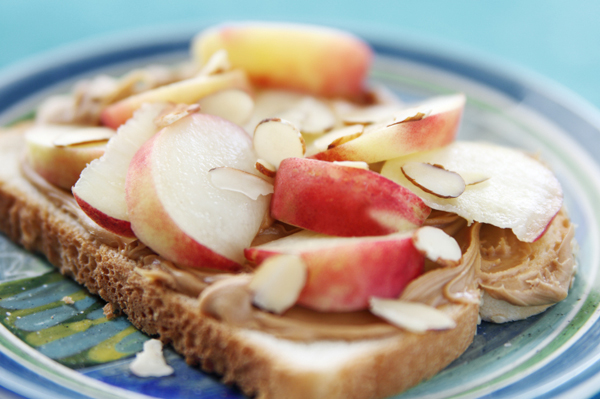It is important to understand that eating after exercise is a very symbolic event. Your body has just performed for you and done amazing feats. Every cell in your body is a loyal citizen to the leader that you are, and they are awaiting the arrival of your given supplies with excited expectation. They use the influx of energy and nutrients to build new muscle, store energy for later use, break down fat and combat any damage that may have been done from the sumo-state of fuel burning. Your cells deserve good nutrition.
There are two phases in post-workout recovery. Here is the first one:
#1: The Carbohydrate Fuel Window Snack
The 45 minutes after a workout is considered a 'fuel window' where it is the best time for us to consume high quality food. This window is like a portal that opens right after we finish (or rather since we began) and during this time the muscles in our body are better able to absorb the carbohydrate, speeding recovery. Carbohydrates restore the energy reserves that are needed in our muscles to recover and they also shuffle in other nutrients to overtime develop a biologically younger body. The key here, though, is quality. A carbohydrate of sugar water, or white bread is not going to cut it.
A fuel window carb need not come along with fat. Dietary fat is awesome - but it slows down delivery of fuel to the muscles in this window - so save that for the next phase in recovery. Focus on carbohydrates that are still in their whole food form. They will contain the essential enzymes, vitamins and minerals that are needed to properly burn and utilize the fuel.
You may hear that a small amount of protein with this post-workout snack can be beneficial. It has been found that a ratio of 20% protein to 80% carbohydrate helps speed up glycogen synthesis (the rate at which muscle absorbs carbohydrate). This means 4 part carbohydrate to 1 part protein in your recovery snack. Anymore protein than that, and it is thought to slow recovery. You can take this or leave it. As with all dietary advice, filter it through your Awake Eating Experience and find out what feels good for you.
Ideas for a post exercise snack:
- Fruit (high sugar fruits like banana, pineapple, mango and papaya are great choices and they also naturally contain anti-inflammatory plant chemicals for recovery)
- Dried fruit
- Recovery Smoothie - combine in a blender 1 banana with 1 cup of your favorite frozen berries, juice of 1 lemon, 1/4 teaspoon of salt, 1/4 cup hemp protein and water for consistency that you desire.
- Lemonade Recovery Drink - Juice of 1 lemon, 3 dates, 2 cups of water, 1 tablespoon hemp protein, 1/2 teaspoon lemon zest, a tad of fresh ginger for anti-inflammation.
#2: Balanced, Nutrient-Rich Meal
After it has been an hour since you have finished working out it is now time to feed your body a more dense meal that will provide the long-term building blocks needed for faster recovery and faster strength gains. It is important to remember that a conventional heavy meal, perhaps a cheeseburger, steak and fries or meatloaf will actually inhibit recovery. These types of standard fair put an extra strain on your body by diverting precious blood flow away from recovery and into digestion. Below are a couple options for this step:
- Liquid Meal: If you have had a particularly intense workout where you pushed yourself extra hard it would be wise to eat a liquid meal. The energy demands required of digestion are reduced and your recovery is enhanced. Below is my favorite post workout smoothie that is packed with anti-inflammation, pro-recovery nutrition for optimal energy and athletic result:
- Antioxidant-Rich Recovery Smoothie - Banana Berry
- 1 Banana
- 1/2 Cup Frozen Berries (blueberries are my favorite!)
- 2 Cups Coconut Milk
- 1 Tablespoon Ground Flaxseed
- 1 Tablespoon Raw Hemp Protein
- Combine in a blender. Makes 2 servings.
- Full Meal: To aid in digestion and provide your body with a meal that is easily absorbed and digested I recommend to divide your place in the following ratios:
- 1/2 - Fresh salad, lightly steamed veggies, or lightly stir fried veggies.
- 1/4 - Protein source. Fish, poultry, free range grass fed beef, legumes (tofu, tempeh, black beans, garbanzo beans, lentils).
- 1/4 - Starch (potato, brown rice, whole grain pasta/bread) - This is not necessary because of the carbohydrates that come from the vegetables. You can substitute the veggies for this section.
- Healthy fat - olive oil, coconut oil and raw uncooked, avocado, flax seed or hemp seed oil can be drizzled over and used in the above dishes. Nuts and seeds can also be used here.
Nat













